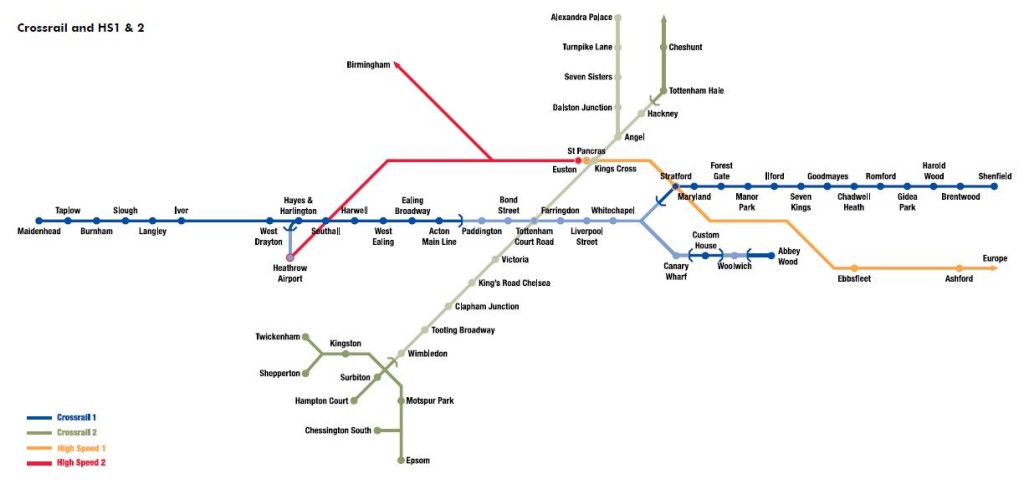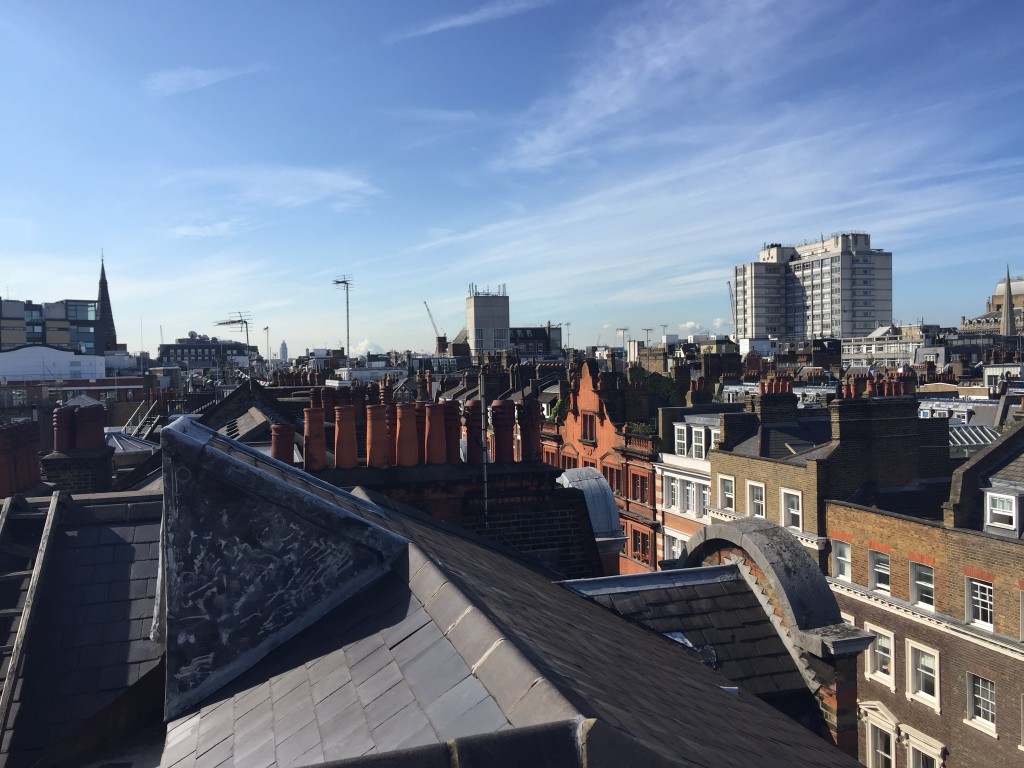Wendy Shillam, Chair of the Fitzrovia West (FitzWest) Neighbourhood Forum tells us how she feels the Neighbourhood Plan can help to control development in our area.
“Some residents I speak to are awestruck by the schemes which seem to receive preferment in our planning system. Why is it happening? We think that the Neighbourhood Plan can help resolve the problem, blocking poor development and raising the standard for developments that do go ahead. In addition government policy will help funnel money from developments, to improve the area.”
Why is there pressure for development?
It is government policy to encourage living in the city,especially where there’s good public transport. So Fitzrovia is a target area for increasing development. But the Neighbourhood Plan can help manage and control that development. It can ensure that residents and local businesses don’t lose out because of its negative impact. In fact the Neighbourhood Plan can help to ensure that development goes hand in hand with other important improvements for Fitzrovia.
We all know that Fitzrovia is a great place to live and work. We appreciate being part of a diverse community. We enjoy the interesting cafes, shops and offices – and businesses, along with their staff, like being here. No wonder more developers are taking an interest in what used to be considered a rather sleepy backwater, albeit in the centre of town.
Crossrail and HS2
A great asset of the area is its transport connections. In a few years’ time this will get even better. Crossrail 1 is due to open in 2018, Crossrail 2 is already planned and the lines will cross at Tottenham Court Road, making it a major hub. Some estimates suggest that 200 million people will travel on Crossrail annually. Global Estate Agents like CBRE predict:
‘Tottenham Court Road, Charing Cross Road and New Oxford Street – and their immediate environs – will all be beneficially affected, repositioning many areas that have been borderline poor secondary or tertiary [commercial property] for years. Public realm improvements, combined with cutting-edge modern transit architecture, will give these areas a major boost, brushing aside decades of decay.’
In their website article on the subject, CBRE advise developers that the best opportunity sites will be immediately north and south of Oxford Street, i.e. in Fitzrovia and Soho.
High Speed 2 (HS2) will terminate at Euston and eventually run via Birmingham to Manchester and potentially further north.
Three new transport lines, just a few minutes’ walk from Fitzrovia, is the primary reason that we are getting unprecedented pressure for development in our area right now.
Where should development occur?
The area around Tottenham Court Road, including the hinterland of the new Crossrail station is designated as an ‘opportunity area’ by the Greater London Authority (GLA). Development here is inevitable, and many sites like the sorting office at the bottom of Newman Street have already been given planning permission. But the Opportunity Area represents only a fraction of the entire FitzWest Neighbourhood Area.
How the neighbourhood plan will work?
Our job will be to identify other potential sites within FitzWest and evaluate them for ourselves, weighing up the pros and cons, according to neighbourhood priorities. How high should these new buildings go? What uses should they have? How can we integrate affordable housing into such a high value area? How sustainable should development be? As well as considering massing, form and function, we will be considering issues like parking, deliveries, waste and emissions from boilers and air-conditioning?
Consider the question of height. There is no high buildings strategy for Fitzrovia, yet high building planning applications are commonplace these days.
There are some parts of our area where high buildings are definitely out.Parts of FitzWest happen to be in the line of sight between Primrose and Parliament Hills and the Palace of Westminster. That means that in some locations high buildings cannot be built because they would interrupt these important views. In addition, within the East Marylebone Conservation Areas around Great Titchfield Street, the traditional roofline is very consistent. We plan to publish policies about high buildings suggesting where they are and are not appropriate. We will take into account the overshadowing of existing residential blocks which, until now, the City Council have been unwilling to consider as important.
The view of the rooftops looking south along Great Titchfield Street. The spires of All Souls and All Saints Churches are both visible, framing the view.
Community Infrastructure levy
Westminster’s own planning policies are unequivocal in demanding that development, where it is acceptable, should contribute to mitigation. For example, when discussing impacts from transport changes the policies state that new station development should contribute to ‘the public realm’. Mechanisms exist to ensure that the contribution is fair for each development, large or small. Our Neighbourhood Plan can help formulate those mechanisms.
From later this year, most new development will bring with it a payment to the GLA and the City Council which is called the Community Infrastructure Levy (CIL) . The Authorities are duty bound to consult with the Neighbourhood Forum to establish a local agenda to agree how to expend this levy. For example, CIL money could be spent on improved rubbish disposal systems, better green infrastructure, more cycle facilities and more electric vehicle charging points.
What Government says about neighbourhood planning
Once the Neighbourhood Plan is published it will go to a local referendum. If, as we hope, this is agreed, we will be a much stronger community, with the authorities taking note of our wishes. The National Planning Policy Framework (NPPF), a government policy document that sets out how neighbourhood planning will work, makes it very clear that:
‘Outside… strategic elements, neighbourhood plans will be able to shape
and direct sustainable development in their area. Once a neighbourhood plan
has demonstrated its general conformity with the strategic policies of the Local
Plan and is brought into force, the policies it contains take precedence over
existing non-strategic policies in the [Local Authority] Local Plan for that neighbourhood, where
they are in conflict. Local planning authorities should avoid duplicating
planning processes for non-strategic policies where a neighbourhood plan
is in preparation.’ NPPF Par 185
It is true that we can’t stop growth. We can’t go against national, London-wide or Westminster City strategic policy. But we can work with all of the policy makers, on behalf of the community, to make sure that growth is managed. Well-mannered development can bring benefits to everyone who lives, works or visits our area. The FitzWest Neighbourhood Plan aims to ensure that this will happen.
Wendy Shillam
FitzWest Neighbourhood Forum
Join us, help us draft the Neighbourhood Plan and ensure that your views are included. Membership of the FitzWest Neighbourhood Forum is free and open to anyone who lives, works or runs a business/organisation within the area. Go to https://fitzwest.org/become-a-member/ to find out more.
We welcome comments on the website. All our committee meetings are held in public. Check the agenda page for more details. We will also continue to hold regular public meetings and events throughout the plan making period. We believe that everyone should have a say.
A shorter version of this article appears in The Fitzrovia News




Hi Fitzwest,
Thank you for posting your article, It is quite interesting.
Keep posting !